2013 Lexus ES Review – Video

With the all-new 2013 ES, Lexus is taking advantage of its unique situation. While its German rivals may have a long list of niche segments that the Toyota luxury division doesn’t compete in, none of them have a car like the ES, and due to European preferences, aren’t likely to any time soon – if ever.
FAST FACTS
| 1. Trading out its former Camry underpinnings for those of the full-size Avalon, the Lexus ES gains 4-inches of rear-seat legroom but is only 1-inch longer. |
| 2. A carryover 268 hp V6 is now joined by a 200 hp 4-cylinder hybrid in the ES300h that’s rated at 40 mpg city and 39 mpg highway. |
| 3. All models get a Drive Model Select dial with Normal, Eco and Sport settings, plus an EV mode on the hybrid. |
| 4. Optional extras include a panoramic glass roof, climate controlled seats, a power trunklid, a power rear sunshade, an 835-watt Mark Levinson audio system and rear cross traffic alert. |
Now moving into its sixth generation, for the first time the ES clearly breaks with tradition and is different from all past cars in several respects. Yes, it’s still a front-drive machine, but it’s larger, trading its Camry-sourced platform for one derived from the full-size Avalon. It’s also, for the first time in its history, available with a hybrid powertrain – another area where the Germans can’t touch.
ES SAVED BY STYLING, CHINESE MARKET DEMANDS
The ES redesign comes at a critical time in the company’s history. Had it happened two years earlier it might still look like a gussied-up Camry with no road presence to speak of. Now, however, it gains the brand’s aggressive new spindle grille plus LED daytime running lights. With just the right amount of exterior chrome, ES350 models get a sporty dual exhaust and hybrid versions a rear decklid spoiler, and thanks to a raised beltline the new car looks remarkably similar to the flagship LS sedan from a profile.
It also feels like the LS from the back seat, with an added four inches of legroom. An obvious nod to the growing Chinese market where extended wheelbase models are the rage, the limo-like space will be appreciated by passengers here at home.
Surprisingly, while the space has grown so much, the car hasn’t. Only two inches have been added between the wheels and in total it’s just one-inch longer overall. The result is less overhang which helps mask the increased size and even help improve the driving dynamics.
Still, it’s bigger than ever and while that can easily translate into a steady and smooth highway cruiser, handling can be easily compromised. And yet it’s not. While far from engaging, the ES leans less than you’d expect and the biggest issue is just getting used to its size.
The steering is light though reasonably precise. One odd trait, however, is that while this new electric system builds boost progressively in the corners it doesn’t like to unwind and is missing that natural return-to-center feel once the road begins to straighten out.
TRUE LUXURY CRAFTSMANSHIP
Once pointed straight ahead there’s time to enjoy the many amenities the ES now offers – for yourself and your passengers. Some of the luxury experience is diminished, however, by road noise from the tires that, while not excessive, is less than ideal on such a car.
Base ‘Premium’ cars come equipped with a faux leather called NuLuxe and as we’ve seen on past Lexus models it’s surprisingly nice; more luxurious to the look and touch in fact than even BMW’s genuine cow hide.
Lexus interior design has a simplicity to it that has to be experienced to be appreciated and can best be described as elegant. Photos won’t wow you but the touch and feel will.
The leather-stitched dash is made by the company’s top craftsmen, known internally as Takumis. In total, there are just 12 Takumis and the requirements to become one include completing timed dexterity and quality tasks, such as folding an origami cat, in 90 seconds, with one hand – the non-dominant hand.
Upgrade to leather seats on the Luxury model or go all-out with semi-analine leather on the Ultra Luxury trim. New for the sixth-generation is a sumptuous Parchment color, with the perfect level of polish on the wood trim – understated maple for the V6 and a modern bamboo for the hybrid.
To better engage the driver there’s a quicker steering ratio, the steering wheel itself has been angled further downward, while the seats are better bolstered – meaning now they actually have some side support.
Get the Flash Player to see this player.
Standard equipment across the range includes 10-way power front seats and a SmartKey system with push-button ignition, while optional goodies range from a heated steering wheel to a panoramic glass roof, climate controlled seats, a thumping 835-watt 15-speaker Mark Levinson audio system and even a power trunklid. Back seat passengers can also enjoy the privacy of an available power rear sunshade and manual side shades.
Safety equipment includes items like 10 standard airbags while options range from the expected, like blind spot monitoring and lane departure warning, to the high-tech, such as rear cross traffic alert and automatic high beams that will stay on for added light, diming only when oncoming traffic is detected.
With a 7-inch display standard and the Display Audio control, there are numerous upgrades available from navigation, to the Lexus Enform package that connects to your phone and features numerous handy apps. Control of those added functions is in some ways made easy by the second generation Remote Touch interface, where you use a joystick to “feel” your way across the screen. Ideal for simple functions, try typing an entire address into the navigation system and the leap between such a controller and a modern touch screen is as vast as the difference between chopsticks and the fork and knife.
DRIVE MODE SELECT
All ES models now also come with the Lexus Drive Model Select dial, located on the center console. With settings for normal, eco and sport (as well as an EV mode for the hybrid), the simple dial lets you instantly achieve better fuel economy by dulling the throttle response, or delivering added driving performance by firming up the steering and making the gas pedal more responsive.
At 268 hp on the V6-powered ES350 (the same amount as the outgoing model), acceleration is brisk regardless of the setting with a 7.1 second 0-60 time. In fact, unless you’re loading the car up, it’s got more power than it needs.
Down 68 hp, the Hybrid ES300h still impresses. Borrowing the drivetrain from the new Camry Hybrid, it’s an electric motor mated to a 2.5-liter 4-cylinder. Here the differentiation between the drive modes is dramatic, though as a pleasant surprise, even in Eco mode the hybrid is livable as a daily driver.
Turn the knob to sport and the car wakes right up. Less powerful than the V6 it’s actually more responsive. Thanks to the immediate electric boost and the instant revs of the CVT, touch the throttle and there’s no waiting like with a conventional automatic.
The trade-off for the potent V6 is fuel economy, that, while good for a full-size sedan, isn’t setting any records at 21 mpg city and 31 mpg highway for a combined total of 24 mpg. The improvement for the hybrid is by no means minimal, with a more than 50 percent gain to 39 mpg combined (40 mpg city and 39 mpg highway). That number is so good its 30 percent better than sub-compacts like the Honda Fit or Fiat 500.
And as an added bonus, the ES runs on regular 87 octane – an extreme rarity in the luxury segment.
An obvious down side to the hybrid model that should be pointed out is the lack of fully folding rear seat. ES300h models get a decent 12 cu-ft, while non-hybrids get 15 cu-ft – which even then isn’t spacious by multiple body-count large car standards.
THE VERDICT
A unique model in the luxury segment, Lexus has built on the past strengths of the ES while adding more qualities to further distinguish a car that’s long been a pretender in luxury circle.
We generally object to the current trend of automakers kowtowing to Chinese tastes when developing their future products, but this is one case where it worked out right. Growing in size, luxury and style it now looks and feels like a genuine luxury sedan and in many international markets the fact that it’s front-wheel drive won’t matter. In fact, according to Lexus VP Mark Templin, they’re hoping to attract Mercedes E-Class buyers here at home. That’s no stretch either, as drive-wheels aside, the ES has now achieved genuine luxury sedan status.
While pricing has yet to be released, Templin did also say that the ES will continue to offer segment leading value, with the hybrid premium the smallest in the Lexus lineup, allowing consumers to easily get a return on their investment.
The hybrid does offer some compromises, but with shockingly good fuel economy, not to mention that enticing bamboo wood trim, the two decade wait for an ES hybrid is definitely worth it.
LOVE IT
- Great new look No longer a luxury pretender Amazing fuel economy on ES300h
LEAVE IT
- Too much road noise Remote Touch Interface frustrating Electric power steering oddities

With AutoGuide from its launch, Colum previously acted as Editor-in-Chief of Modified Luxury & Exotics magazine where he became a certifiable car snob driving supercars like the Koenigsegg CCX and racing down the autobahn in anything over 500 hp. He has won numerous automotive journalism awards including the Best Video Journalism Award in 2014 and 2015 from the Automotive Journalists Association of Canada (AJAC). Colum founded Geared Content Studios, VerticalScope's in-house branded content division and works to find ways to integrate brands organically into content.
More by Colum Wood
















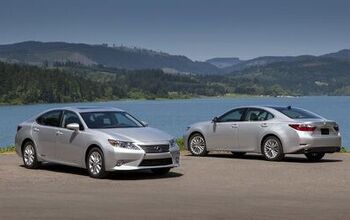



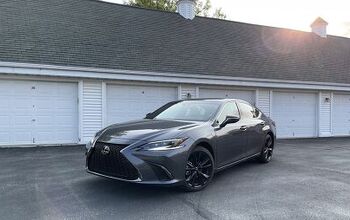

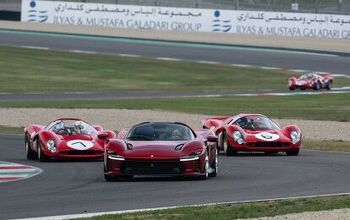
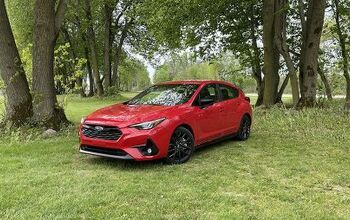
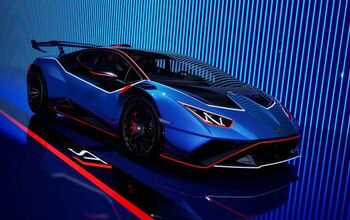

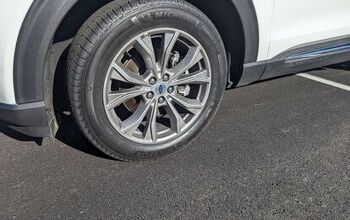




Comments
Join the conversation